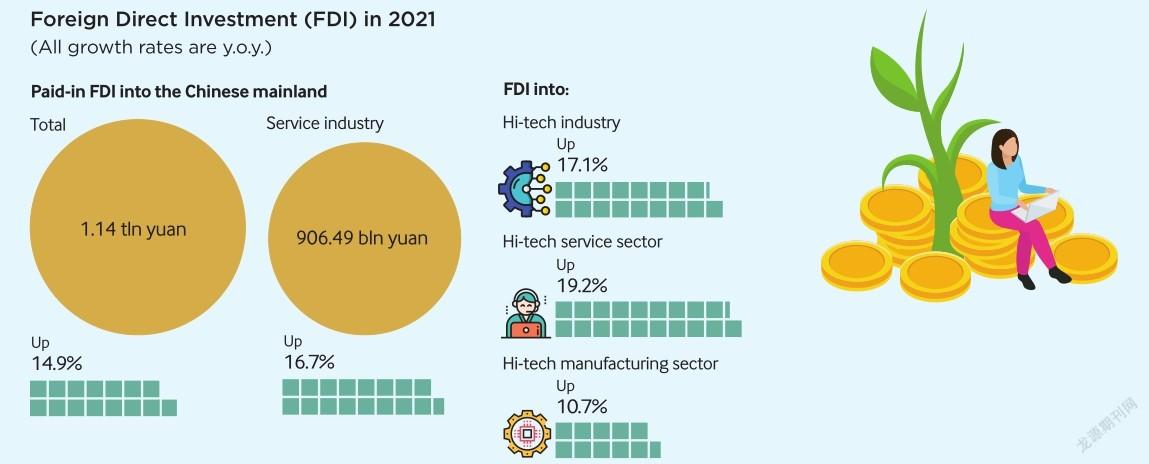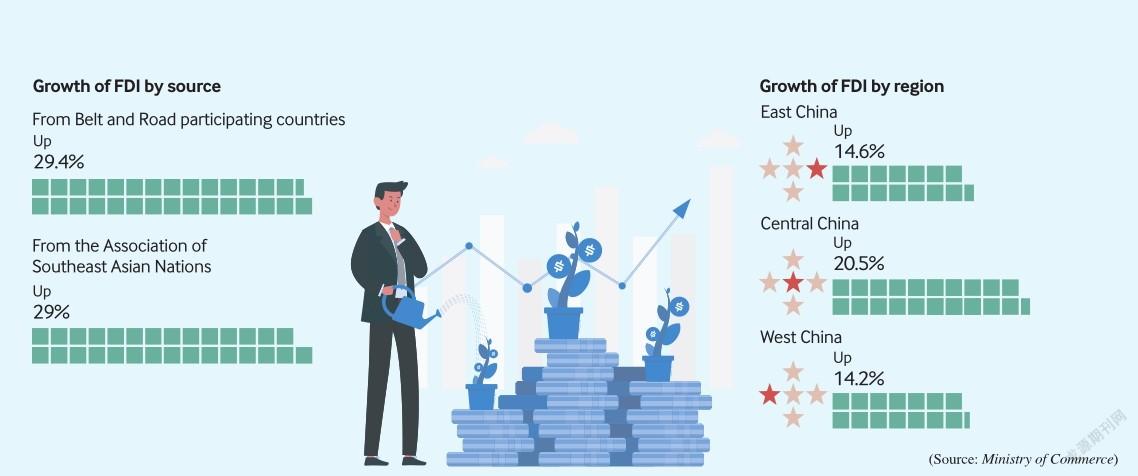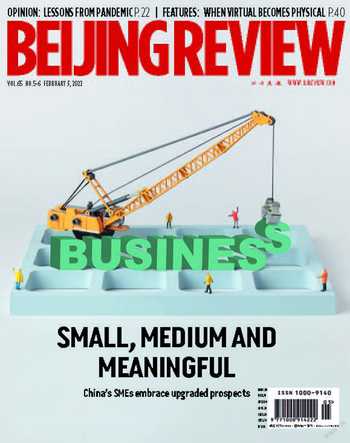Panoramic View of Civilization
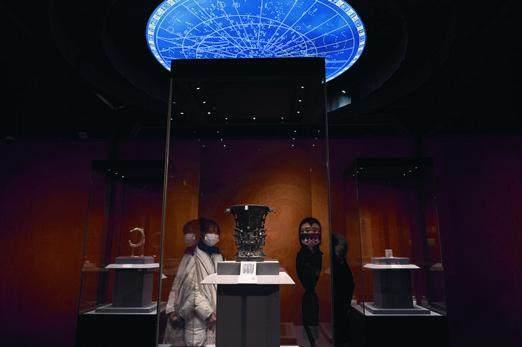
Visitors view a vessel known as the He zun from the Western Zhou Dynasty (1046-771 B.C.) during an exhibition at the Palace Museum in Beijing on January 25. The piece is the oldest known bronzeware inscribed with the word zhongguo (China).
With more than 130 precious cultural relics on display, the exhibition, from January 25 to May 4, sheds light on the origins, development and achievements of Chinese civilization, as well as its major contributions to human advancement.
Customers select their potted plants for the Spring Festival at a flower market in Kunming, Yunnan Province on January 24.
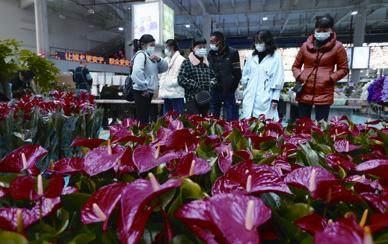
The level of trust among Chinese citizens in their government is 91 percent, whereas the corresponding figure for U.S. citizens is only 39 percent, according to the 2022 Edelman Trust Barometer, released on January 18.
The 2022 Edelman Trust Barometer is the 22nd annual trust and credibility survey conducted by Edelman, the world’s largest global public relations consultancy firm.
Powered by Edelman Data& Intelligence and consisting of 30-minute online interviews conducted on November 1-24 last year, this survey has 36,000 respondents from 28 countries.
Of all four categories the barometer covers, namely business, non-governmental organizations, government and media, the trust index of Chinese citizens increased 11 percent to 83 percent, while that of U.S. citizens fell 5 percent to 43 percent.
The Edelman report cited several internal and external factors to explain why popular support was so high in China in the past year. According to its analysis, China was the first major economy to reopen and thrive after the COVID-19 outbreak. It was also the only major economy to see growth in 2020, with that momentum continuing throughout most of 2021.
Moreover, the Chinese Government made progress in other areas in 2021, such as the fight against pollution and its anticorruption campaign, according to the report.
Jilin Province has built 54 ski resorts and 279 ski runs with a maximum daily capacity of approximately 100,000 visitors, said local authorities on January 24.
The figures were released during the Fifth Session of the 13th Jilin Provincial People’s Congress.
Located at a latitude of 41 to 43 degrees north, the northeastern province is endowed with excellent natural conditions for developing the ice and snow industry. Its Changbai Mountains are one of the world’s three largest powder snow bases. Currently, the region is being built into a globally influential tourism destination.
Aside from skiing, local hot springs, a gorgeous scenery of rimes and unique folk customs have also drawn many tourists to the province during the winter months.
In October 2021, Jilin unveiled a blueprint for developing itself into a world-class skiing hub, as winter sports have gained traction due to the upcoming Olympic and Paralympic Winter Games in Beijing.
According to the plan, Jilin will be home to 100 ski fields by 2025, and the value of Jilin’s ice and snow industry will exceed 250 billion yuan ($39.4 billion) by that time.
Airports on the Chinese mainland handled more than 3.83 million outbound passenger flights in 2021, up 7.21 percent year on year, according to an industry report.
Last year, there were nearly 3.8 million outbound domestic flights and domestic transport capacity rose 9.56 percent from the level of 2020, said a report released by VariFlight, a Chinabased civil-aviation data service provider.
Twenty-two airports with an annual passenger throughput of 10 million or above recorded a year-on-year increase in total outbound capacity. Among them, Beijing Daxing International Airport also saw its outbound capacity increase compared with the level in 2019.
Nine airports saw their passenger throughput exceed 30 million. Among them, the Guangzhou Baiyun International Airport in Guangdong Province ranked first in outbound capacity, said the report.
Another 25 pottery statues were discovered in Pit 1 of the iconic museum housing the terracotta warriors in Shaanxi Province in 2021. Among these, the medium and high-ranking officer statues are particularly significant to the study of military arrays in the pit, Xinhua News Agency reported on January 21.
According to the museum, known officially as Emperor Qinshihuang’s Mausoleum Site Museum, these terracotta warriors, with well-preserved colored paint, were unearthed in the middle section of the north part of Pit 1. Most of them were excavated behind the remains of chariots, including one statue of a general and one statue of a medium-ranking officer. To ensure the safety of the statues and the environment, archeologists have transferred them to the museum’s conservation room while they deal with mold growing in the pit.
A cleaning robot sprays disinfectant inside Shanghai Hongqiao Railway Station, Shanghai, on January 21. During the Spring Festival travel rush this year, a number of sanitation devices and disinfection robots have been put to use at the station to ensure passengers’ healthy travel.

China plans to launch its newgeneration carrier rocket, Long March-8 Y2, between late February and early March from Hainan Province, sources with the China Academy of Launch Vehicle Technology, the country’s leading rocket maker, said on January 21.
The rocket arrived at Hainan’s Wenchang Space Launch Center on January 21, after a week of ocean transport. It will undergo final assembly and testing at the launch site. The scheduled Long March-8 mission will be China’s first rocket launch this year.
New mothers can now enjoy additional maternity leave of 30 to 90 days in 25 Chinese provinciallevel regions, after the regions completed revisions of their population and family planning regulations, an official with the National Health Commission said on January 20.
The revised regulations also added stipulations about developing government-funded child care services and protecting the interests of one-child families, Yang Jinrui, an official in charge of demographic surveillance and family development, said at a press conference held by the commission.
China released a decision on improving birth policies to promote long-term and balanced population development in July 2021, allowing all couples to have up to three children.
After decades of the onechild family planning policy implemented among the majority of the Han population, China partially introduced a twochild policy in 2013 and fully implemented it in 2015, which resulted in the birth of over 10 million more second children nationwide, according to the latest population census data released in 2021.
Visitors to Beijing’s Jingshan Park take photos on January 22 of the Forbidden City, also known as the Palace Museum, after a bout of snowfall.

China will improve its capacity in recycling waste materials as part of its efforts to facilitate green and low-carbon development, according to new guidelines on the recycling of waste materials, Xinhua reported on January 25.
By 2025, China will build a network for waste recycling with more than 1,000 green sorting centers, said the guidelines jointly issued by seven government departments, including the National Development and Reform Commission. Approximately 60 cities will have complete waste reuse systems. The reuse of nine major resources will reach 450 million tons, including iron and steel, copper, aluminum and lead.
The government will draft more policies to support waste reuse such as tax cuts and fundraising, according to the guidelines.
China’s shipbuilding sector continued to take the lead globally last year, as busy maritime transport across the world pushed up demand for new ships.
The country’s shipbuilding output amounted to 39.7 million deadweight tons (DWTs) in 2021, up 3 percent year on year, data from the Ministry of Industry and Information Technology (MIIT) showed.
The 2021 output accounted for 47.2 percent of the world’s total, up 4.1 percentage points from that in 2020, the ministry said.
New orders surged 131.8 percent year on year to 67.07 million DWTs in 2021, with a 53.8-percent share of the global market.
Holding order volumes came in at 95.84 million DWTs by the end of last December, rising 34.8 percent from the end of 2020 and taking up 47.6 percent of worldwide market.
The international competitiveness of Chinese shipbuilding companies further increased in 2021, with six of them ranking among the world’s top 10 shipbuilders in terms of output, new orders and holding orders, respectively.
China’s fiscal revenue rose 10.7 percent year on year to 20.25 trillion yuan ($3.19 trillion) in 2021, Vice Minister of Finance Xu Hongcai said on January 25.
Fiscal revenue in 2021 nearly doubled the 2012 figure of 11.73 trillion yuan ($1.85 trillion), Xu said at a press conference.
The Central Government collected roughly 9.15 trillion yuan($1.44 trillion) in revenue, up 10.5 percent year on year, while local governments saw revenue up 10.9 percent to 11.1 trillion yuan($1.75 trillion).
“The recovery of economic growth and higher producer prices helped drive up fiscal revenues of central and local governments,” Xu said.
The country’s fiscal spending edged up 0.3 percent year on year to 24.63 trillion yuan ($3.89 trillion) last year.
As of late 2021, the installed capacity of photovoltaic (PV) power nationwide came in at 306 million kW, taking the top spot worldwide for a seventh straight year, according to the National Energy Administration(NEA).
The newly added capacity stood at 53 million kW, leading the world for the ninth consecutive year.
Distributed generation has been a new area of development in the sector, the NEA said.
The installed capacity of distributed PV power grew to 107.5 million kW, or one third of the total, while in newly added power generation, its proportion hit 55 percent.
Household PV power generation maintained growth momentum last year, with capacity increasing to about 21.5 million kW, the NEA said.
The Chinese currency renminbi(RMB), or the yuan, climbed one position to become the fourth most active currency for global payments by value in December 2021, with a share of 2.7 percent, the Society for Worldwide Interbank Financial Telecommunication (SWIFT), a global provider of financial messaging services, said on January 20.
The value of RMB payments increased 34.6 percent compared to the previous month, while general payments across all currencies improved 6.44 percent.
In terms of international payments, excluding those within the eurozone, the RMB ranked sixth with a share of 1.91 percent in December 2021.
China’s outbound direct investment (ODI) gained 2.2 percent year on year to 936.69 billion yuan ($148 billion) in 2021, the Ministry of Commerce(MOFCOM) said on January 20.
In U.S. dollar terms, it rose 9.2 percent from a year ago, according to MOFCOM spokesperson Shu Jueting.
Non-financial investment into countries along the Belt and Road routes increased 14.1 percent year on year to $20.3 billion.
In 2021, 560 foreign contracted projects with a value of more than $100 million were signed, 46 more than the previous year, MOFCOM data showed. The projects are mainly in the infrastructure sector, such as transportation.
As of last December, investment into overseas economic and trade cooperation zones totaled $50.7 billion, contributing a combined $6.6 billion in taxes and fees to host countries and creating 392,000 local jobs.
Last year, cargo throughput at ports nationwide totaled 15.55 billion tons, up 6.8 percent year on year, according to the Ministry of Transport.
Their container throughput climbed 7 percent from a year earlier to 282.72 million twentyfoot equivalent units (TEUs).
In December 2021, the ports handled nearly 1.34 billion tons of cargo, while container throughput stood at 23.07 million TEUs.
The country’s total imports and exports of goods expanded 21.4 percent year on year to 39.1 trillion yuan ($6.14 trillion) in 2021.
China continued to improve its industrial structure in 2021, with upgrades to the traditional sectors and development of the emerging sectors, the MIIT said on January 20.
In the first 11 months of last year, the energy consumption per unit of added value of large industrial enterprises with annual revenues of more than 20 million yuan ($3.15 million) dropped 5.5 percent year on year.
In the push for green development, the annual output of crude steel was reduced by 32 million tons from the previous year, a drop of 3 percent.
Meanwhile, emerging industries maintained rapid development.
Investment in the manufacturing sector went up 13.5 percent from the previous year, while that in hi-tech manufacturing rose 22.2 percent, data from the Ministry showed. Hi-tech manufacturing output surged 18.2 percent year on year.
Firm Ranking
Internet giant Tencent topped the list of 500 most valuable private Chinese companies in 2021, according to a new ranking released by Shanghai-based Hurun Research Institute.
Contemporary Amperex Technology Co. Ltd. (CATL), China’s leading automotive lithium-ion battery maker, made it to the top 10 for the first time.
The institute ranked the companies based on market capitalization or valuation.
The total value of the companies on the list came in at 66 trillion yuan ($10.4 trillion).
Healthcare firms took up the most spots on the list, with energy businesses coming in second.
($1=6.32 yuan)
